Southwest Michigan field crops update – May 1, 2025
More dry weather resulted in planting and cultivation. Winter wheat hit Feekes 7, and cereal leaf beetle adults were found in southern fields.

Weather
This past week was warmer than normal and quite dry, which resulted in a flurry of fieldwork activity. Today, May 1, started with some early rain. Significant rainfall is expected today and into early tomorrow and again on Sunday. Temperatures are cooling for the weekend, but next week’s outlook is warm and dry for most of the week.
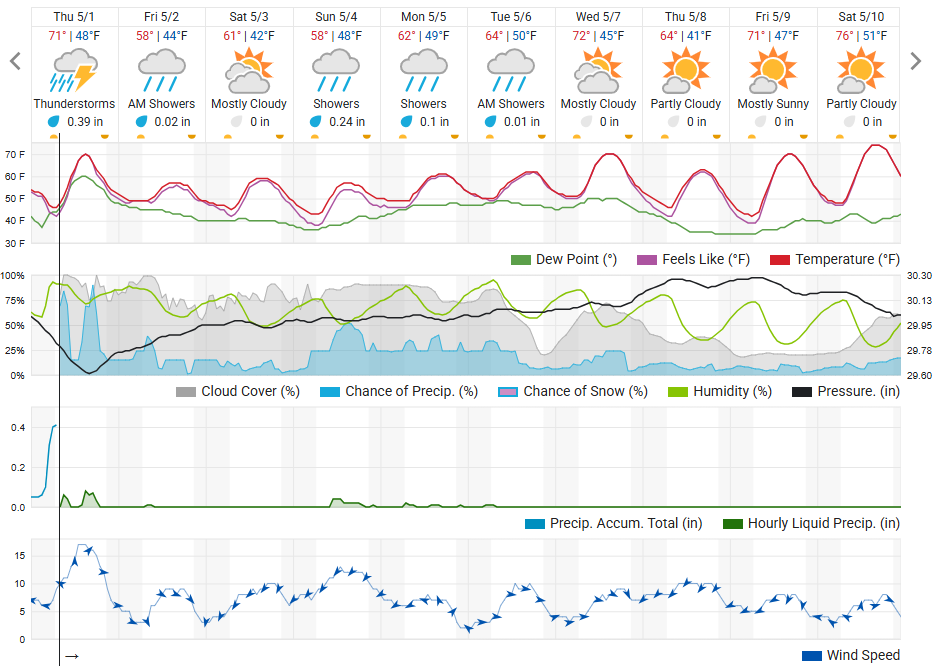
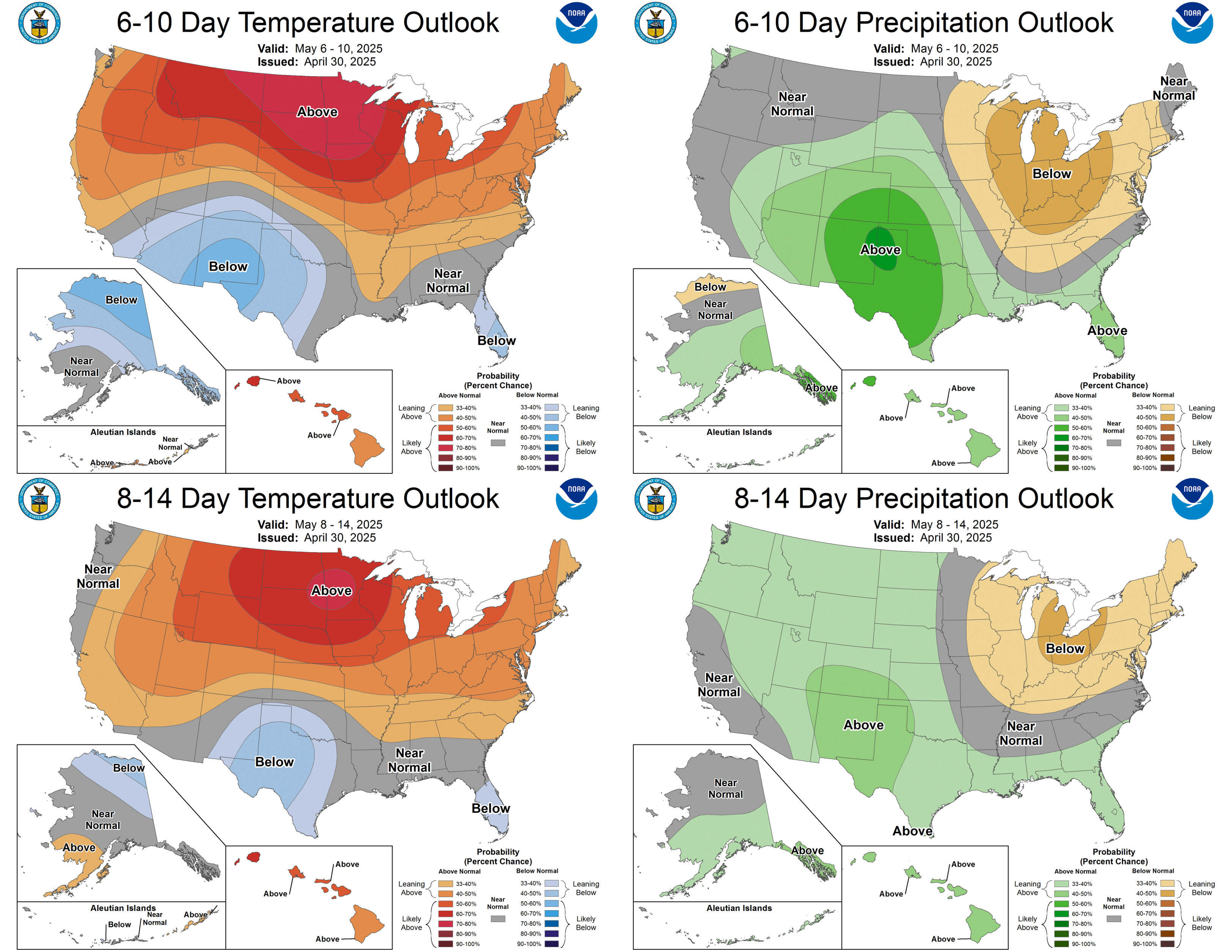
Crops and pests
Soybean and corn (both seed and commercial) planting are in earnest throughout southwest Michigan. Fields that were planted into decaying residues around April 18 are at high risk of seed corn maggot damage. Cultivation and herbicide applications are other common field activities from over the past week. Black cutworm moths are at low populations but have been present in St. Joseph County for the past couple weeks. Fields planted into heavy broadleaf weeds or cover crop residues are at higher risk of black cutworm damage. Waiting to plant until about 10-14 days after burndown will help mitigate this.
Bucket traps in Berrien (near Berrien Springs), St. Joseph (Centreville) and Van Buren (Lawrence) counties have caught the following:
True armyworm
|
Date |
Berrien |
St. Joseph |
Van Buren |
|---|---|---|---|
|
4/14 |
0 |
0 |
2 |
|
4/21 |
0 |
6 |
0 |
|
4/28 |
0 |
1 |
0 |
Black cutworm
|
Date |
Berrien |
St. Joseph |
Van Buren |
|---|---|---|---|
|
4/14 |
0 |
0 |
0 |
|
4/21 |
7 |
15 |
0 |
|
4/28 |
5 |
8 |
0 |
Most winter wheat is at Feekes 7 (two nodes on the stem). Rapid growth is occurring, and so is water uptake. Powdery mildew and low levels of septoria are present in southwest Michigan. This past week saw some fungicide applications, particularly to fields with powdery mildew. Cereal leaf beetle adults were found this week, and aphids are also starting to enter fields.
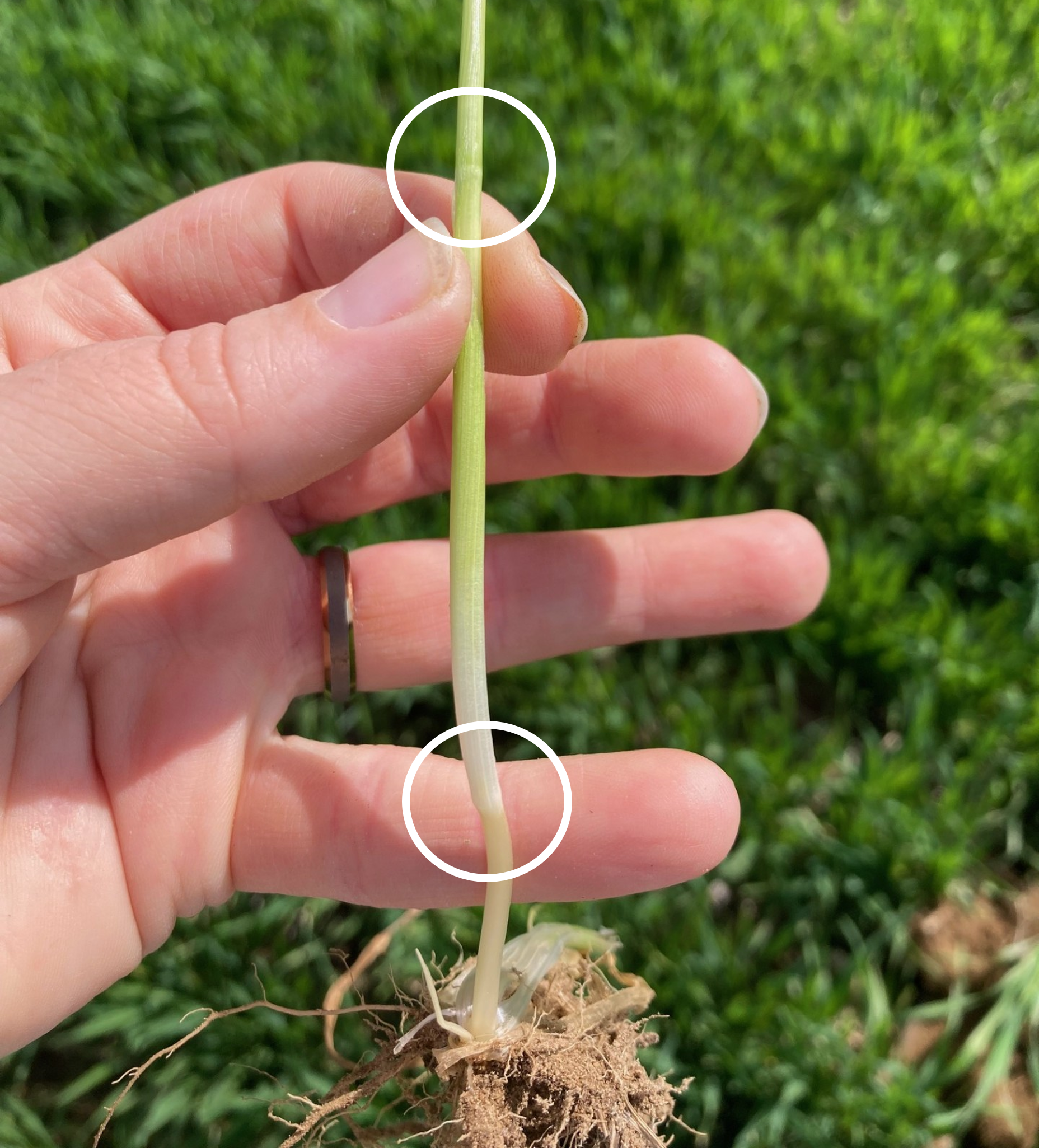
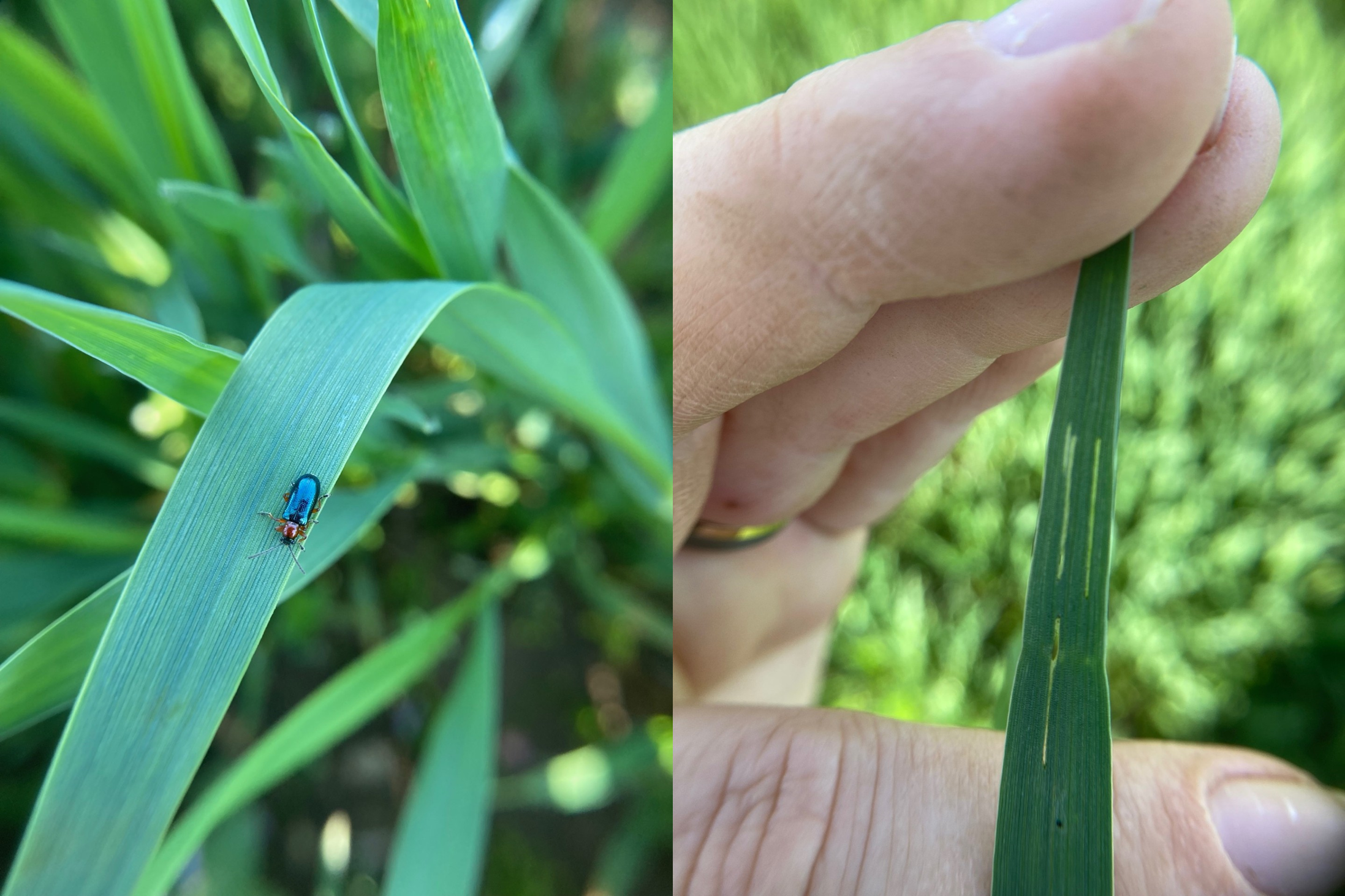
According to the April 30 Michigan Potatoes Industry Update, potatoes are about 75% planted in southern Michigan. Early planted acres are close to emerging.
Alfalfa weevil populations continue to build in alfalfa. Forage systems have many arthropod natural enemies, which provide free insect control. Try to conserve those populations by spraying only when alfalfa weevil has reached action thresholds. Although the damage looks bad, wait to spray for alfalfa weevil until the crop has met the following conditions: if about 9 inches tall with larvae in sweeps, 50% or more of stem tips have feeding damage and there is an average of one larva per stem, an insecticide application is recommended to manage alfalfa weevil. If the alfalfa is about 12 inches tall with larvae in sweeps, 75% or more of stem tips have feeding damage and there is an average of two larvae per stem, an insecticide application is recommended.
For more information, refer to the Michigan State University Extension article, “Weevils are popping in alfalfa fields.” If you are in southwest Michigan and feel uncertain about the time or procedure for scouting alfalfa weevil, contact Nicolle Ritchie at 269-858-8739 or ritchi67@msu.edu for in-field help rather than spraying too early or unnecessarily.

Irrigation update and crop water use
Estimated weekly crop water use for field crops in Michigan (inches/week) for the week of April 28-May 4, 2025.
|
Crop |
Growth stage |
Constantine |
Entrican |
Hart |
|---|---|---|---|---|
|
Wheat |
Leaf Elongation |
0.38 |
0.36 |
0.35 |
|
Wheat |
Jointing |
0.55 |
0.52 |
0.50 |
|
Wheat |
Boot/Heading/Flowering/Grain fill |
0.74 |
0.70 |
0.68 |
Early season crop water use for both corn and soybeans remains relatively low across all three regions. During these initial growth stages, plants have a smaller canopy and limited root development, which means their daily water demand is minimal. Most locations are reporting potential evapotranspiration values below 0.4 inches per week. As a result, current soil moisture and rainfall may be sufficient to support early crop development without the need for irrigation. However, it’s important to continue monitoring local weather conditions and soil moisture to adjust management as the season progresses.
For wheat, crop water use begins to increase during jointing stages (Feekes 6-8). At this point, it is important to carefully evaluate whether irrigation is necessary based on recent rainfall and soil moisture levels. To support your irrigation management decisions, consider using irrigation scheduling tools, which can help estimate crop water needs and decide timing and application.
The table above presents estimated crop water use for various field crops across three locations in Michigan. This data helps irrigation management decisions by showcasing potential crop evapotranspiration, calculated based on reference evapotranspiration and crop coefficients for each crop growth stage. It is crucial to note that crop water use values vary across regions due to differences in weather conditions, growth stages, agronomic practices and soil properties.
When using these values for irrigation scheduling, be mindful that they assume all applied irrigation water will be utilized by the plants without any loss. Additionally, these values do not account for any precipitation that may occur during the week of calculation.
For more tools and information on irrigation scheduling tools, please refer to Irrigation Scheduling Tools.
Reference evapotranspiration data was obtained from Michigan State University Enviroweather, which also offers a model for determining potential crop evapotranspiration. To access this tool, visit Enviroweather, click on "Crops," select your crop and use the potential evapotranspiration tool by choosing your nearest weather station, the latest date of interest and other crop information.
Field Crops Virtual Breakfast Series
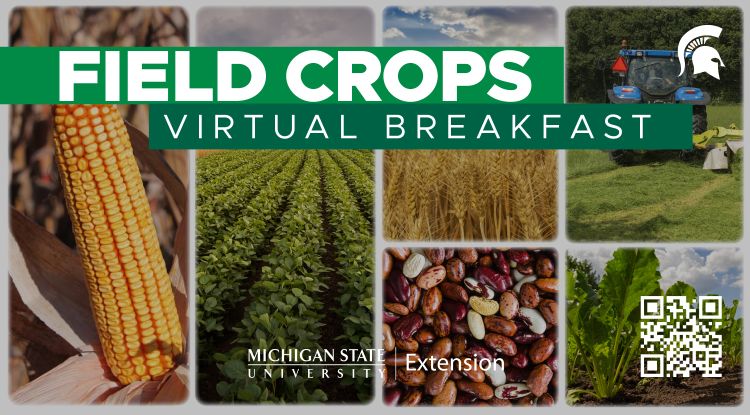
Optimizing forage quality in hay and haylage, presented by Kim Cassida, was the topic for the Michigan State University Extension Field Crops Virtual Breakfast this week. Protein and digestibility are important factors for hay production. Use the relative forage quality standard to price hay when selling hay of mixed species. When selling alfalfa, relative forage quality or relative forage value standards can be used.
Recordings of this and all the Virtual Breakfast meetings are closed-captioned and available at the Field Crops Virtual Breakfast webpage and the MSU Extension Field Crops Team social media platforms: Facebook, Spotify, YouTube, Apple Podcasts and Twitter/X.
This work is supported by the Crop Protection and Pest Management Program [grant no 2024-70006-43569] from the USDA National Institute of Food and Agriculture. Any opinions, findings, conclusions, or recommendations expressed in this publication are those of the author(s) and do not necessarily reflect the view of the U.S. Department of Agriculture.



 Print
Print Email
Email